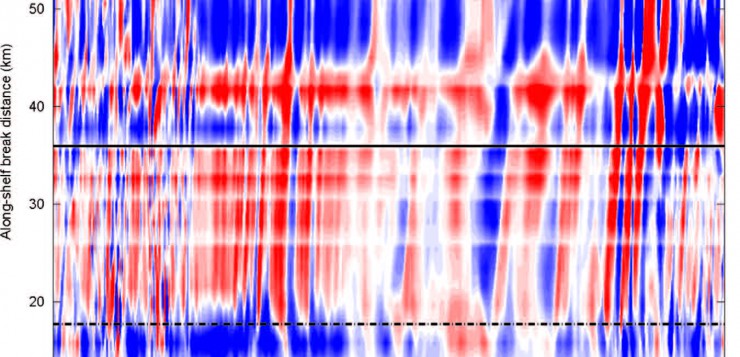Ahumada-Sempoal, Miguel Ángel; Flexas, María del Mar; Bernardello, Raffaele; Bahamon, Nixon; Cruzado, Antonio;Reyes-Hernández, C. Continental Shelf Research 109: 35-45 (2015) DIGITAL.CSIC
A climatological simulation performed with a fine-resolution(∼1.2km) 3D circulation model nested in one-way to a coarse-resolution (∼4 km) 3D regional model is used to examine the cross-shelf break water exchange in the Blanes submarine canyon (∼41°00′–41°46′N; ∼02°24′–03°24′E). ALagrangian particle-tracking model coupled to the fine-resolution 3D circulation model is used to investigate the role of the incident regional flow (i.e.the Northern Current, NC)and its seasonal variability on the dispersion and residence time of passive particles inside Blanes Canyon.The NC flows southwestward, along the slope, with the coastline to th eright.Water is advected offshore/onshore at the upstream/downstream canyon walls, with a net water transport toward the slope (i.e.offshore). The amount of water moved across the shelf break of the upstream wall is approximately three times larger than the amount moved across the shelf break of the downstream wall. This preferential zone for cross-shelf break water ex- change is explained by the asymmetric geometry of the canyon and the orientation of the incident current with respect to the canyon bathymetry. Passive particles released upstream Blanes Canyon be- tween themid-shelf and the upper-slope drift within the NC and accumulate over the shelf edge of the canyon. About half of the particles released at depths above the shelf break move towards shallower areas inside the canyon. In contrast, about two-thirds o fparticles released below the shelf break move to deeper areas.Particle dispersion is higher under weakly (e.g.winter) than strongly (e.g.summer) stra- tified conditions. The residence time of passive particles inside the canyon (∼4–6 days) is double than the residence time downstream of the canyon, indicating that the canyon acts as an efficient retention zone for passive particles.


